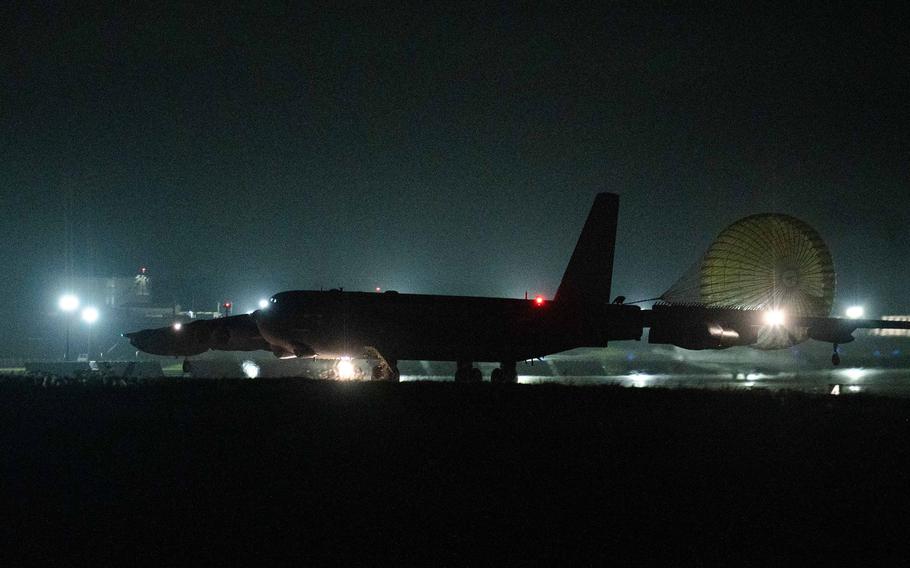
A B-52 assigned to the 2nd Bomb Wing at Barksdale Air Force Base, La., arrives at Andersen Air Force Base, Guam, March 30, 2023. (William Pugh/U.S. Air Force)
Four B-52 bombers arrived last week at Andersen Air Force Base on Guam as part of the Air Force’s ongoing bomber task force missions intended to project U.S. air power in the region.
The bombers are assigned to the 96th Expeditionary Bomb Squadron at Barksdale Air Force Base, La., the Air Force said in a news release Monday.
More than 210 airmen deployed with the bombers that arrived Thursday, the Air Force said. B-52s last deployed to Guam in February 2022.
In recent years, the Air Force has routinely deployed B-52 and B-1 and bombers to Guam, but the service withholds timetables for arrivals and departures to maintain unpredictability.
B-1 bombers deployed to Guam in June and October last year.
The bomber task force gives crews the chance to hone technical and weapons system expertise and also “sends an extremely important message,” Lt. Col. Vanessa Wilcox, commander of the 96th Bomb Squadron, said in the release.
“It demonstrates our continued readiness and commitment to our allies in the region to ensure freedom of movement now and in the future, as well as ensures stability in the region,” Wilcox said.
Bombers in past task force missions have flown with aircraft from Japan, South Korea and Australia during joint exercises.
In November, Australian public broadcaster ABC reported that the Pentagon plans to rotate B-52 bombers to Australia’s Northern Territory.
Under the Air Force’s agile combat employment concept, Guam serves as a “hub” for the service’s aircraft while landing strips in remote and austere locations act as “spokes.”
Guam is particularly vital to U.S. power projection in the Indo-Pacific. It is home to military installations such as Andersen, Naval Base Guam and Camp Blaz, a Marine Corps base still under construction that will become the permanent station for about 1,300 Marines, with another 3,700 expected to rotate through.
Given those assets, Guam would serve as a prime staging area for U.S. forces in a conflict with China or North Korea.
The Defense Department is spending $1.5 billion to build a rigorous missile defense system for the American territory, which will include radars, launchers, interceptors and a control system aimed at neutralizing the kinds of cruise and ballistic missile systems China has or is developing.